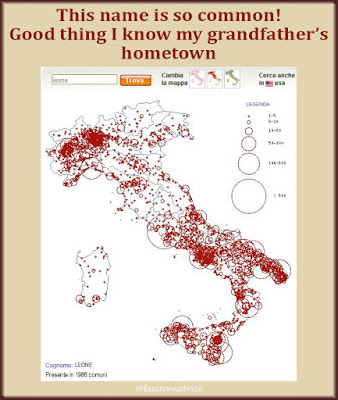Don't waste time searching for an ancestor in a document collection that will not contain their name.
Genealogy is a thriving industry overflowing with documents and databases. If you subscribe to any ancestry sites, you've got a never-ending supply of databases to browse.
But don't waste time. Learn exactly what a document collection holds before you start your search.
 |
| These men in my tree had military records for me to find. But not my paternal grandfather. |
Here's a prime example of how I've been wasting time hunting for a document that can't even exist.
My maternal grandfather, Adamo Leone, fought in World War I. He was in the Italian army and became a
prisoner of war. Obviously I'm not going to find a United States World War I draft registration card for him.
I do have a copy of his World War II registration card when he was 51 years old. This is called the "Old Man's Draft" and was more a database of skills than prospective soldiers. These men were never intended to go to war.
My paternal grandfather, Pietro Iamarino, was still living in Italy between 1914 and 1918. He was only 16 when World War I ended.
But I had no World War II record for him. I spent a lot time examining images of registration cards, one by one. I figured the name "Iamarino" was misfiled, so I hoped to find it myself.
Then one day it struck me. Maybe his 1902 birth year excluded him from this set of records.
Here's what I should have researched in the first place.
Men who were drafted for World War II were age 18–35 in 1942. If they were between 35 and 45 and unmarried, they were also eligible for the draft.
Grandpa was 40 years old and married in 1942. He was beyond the cut-off for military service.
Then there was the "Old Man's Draft" where I found my other, older grandfather Adamo. This registration included men born between April 27, 1877 and February 16, 1897.
Grandpa, born in October 1902, didn't fall into this category, either. As an able-bodied 40-year-old man, Grandpa Pietro was left to continue his work and take care of the home front.
This tiny bit of research could have saved me lots of time.
So here's the moral of my story. Before you search for a particular ancestor in a document collection, stop. Find out exactly what that collection contains. Decide if your ancestor should be there or not.
On ancestry.com, each collection has its details listed below the search area. On familysearch.org, the descriptions are above the search area.
Find out what you're looking at before you spend hours looking at it.
And speaking of tracking your found documents:













